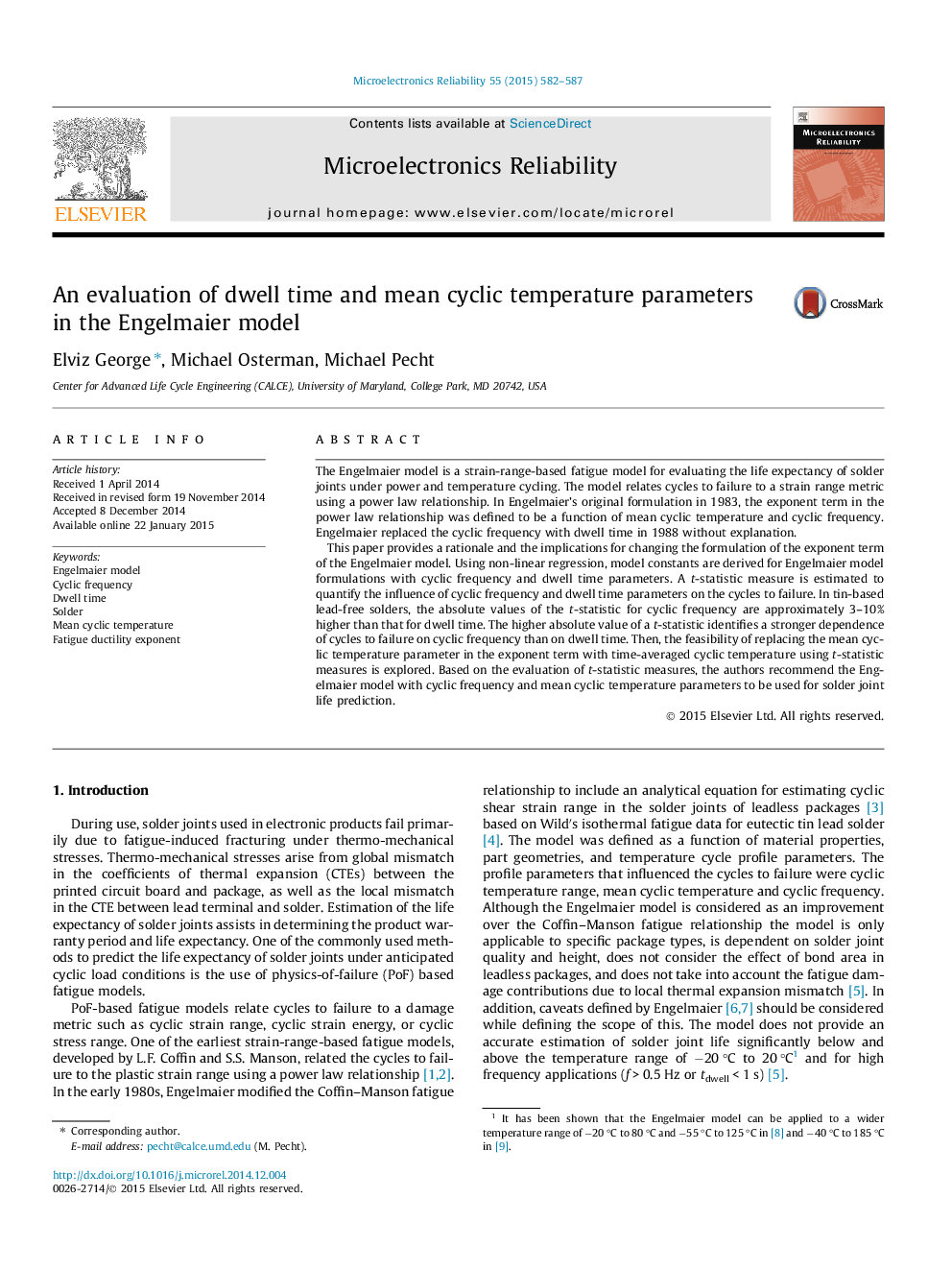| کد مقاله | کد نشریه | سال انتشار | مقاله انگلیسی | نسخه تمام متن |
|---|---|---|---|---|
| 546747 | 1450546 | 2015 | 6 صفحه PDF | دانلود رایگان |

The Engelmaier model is a strain-range-based fatigue model for evaluating the life expectancy of solder joints under power and temperature cycling. The model relates cycles to failure to a strain range metric using a power law relationship. In Engelmaier’s original formulation in 1983, the exponent term in the power law relationship was defined to be a function of mean cyclic temperature and cyclic frequency. Engelmaier replaced the cyclic frequency with dwell time in 1988 without explanation.This paper provides a rationale and the implications for changing the formulation of the exponent term of the Engelmaier model. Using non-linear regression, model constants are derived for Engelmaier model formulations with cyclic frequency and dwell time parameters. A t-statistic measure is estimated to quantify the influence of cyclic frequency and dwell time parameters on the cycles to failure. In tin-based lead-free solders, the absolute values of the t-statistic for cyclic frequency are approximately 3–10% higher than that for dwell time. The higher absolute value of a t-statistic identifies a stronger dependence of cycles to failure on cyclic frequency than on dwell time. Then, the feasibility of replacing the mean cyclic temperature parameter in the exponent term with time-averaged cyclic temperature using t-statistic measures is explored. Based on the evaluation of t-statistic measures, the authors recommend the Engelmaier model with cyclic frequency and mean cyclic temperature parameters to be used for solder joint life prediction.
Journal: Microelectronics Reliability - Volume 55, Issues 3–4, February–March 2015, Pages 582–587